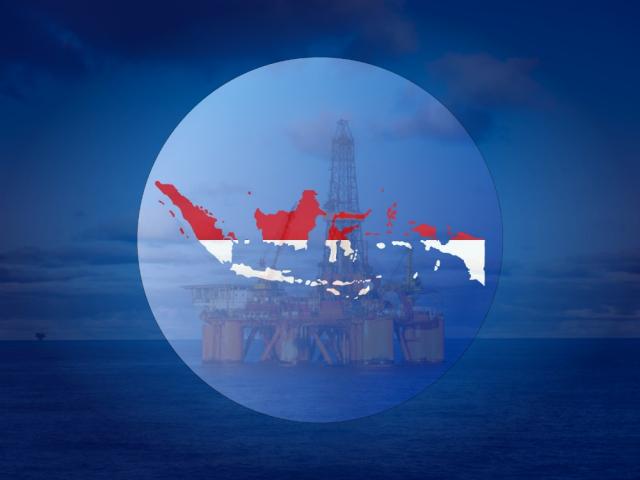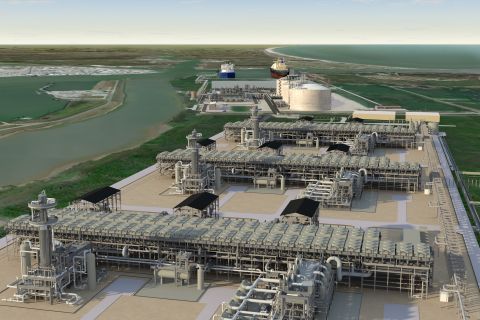
(Source: Shutterstock/Hart Energy)
Indonesia’s energy ministry and a Chevron-led consortium are still looking for a mutually acceptable development plan for the deepwater Gendalo and Gehem oil and gas fields in Makassar Strait a decade after significant reserves were discovered.
Dwi Soetjipto, chief of the country’s upstream regulator Special Task Force for Upstream Oil and Gas Business Activities (SKK Migas), said discussions with Chevron focus on resolving differences on developing Gendalo and Gehem fields as part of the second phase of the Indonesia Deepwater Development Project (IDD-II).
“We hope that the long-awaited IDD, the project run by Chevron, Eni and Sinopec, will begin POD (Plan of Development) discussions in the near future,” Soetjipto said at an industry meeting in Jakarta.
The Gendalo and Gehem fields are located in a water depth of 610 to 1,829 m (2,500 to 6,000 ft) in the Ganal and Rapak concessions, respectively, near the producing Bangka oi and gas field, developed as part of IDD-I’s first phase.
The talks, according to the chief, are mainly centered on sorting out differences on factors like revenue share, extension of production-sharing contracts and investment credit.
“They [consortium members] are carefully calculating the risks associated with the [two] projects,” he said.
SKK Migas is seeking a gross split-based PSC after the expiry of the existing cost recovery-based PSC for Gendalo in 2027 and Gehem in 2028, given changes in PSC regulations in 2017.
The operator has agreed to the gross split-based PSC but is insisting on an additional share of about 10% over and above its due share in the gross split PSC for the two new fields, while the regulator is against it.
Under the gross split PSC, gross production is shared between the state and contractor based on production splits without a cost recovery mechanism. The gross split PSC provides 48% share in total gas output and 43% in oil to the operator/consortium, while the remaining 52% and 57% are for the state.
SKK Migas work program chief Julius Wiranto confirmed that Chevron sought an additional share of 10% the Indonesian government has desertion to allocate.
The two parties have also differed on extension of the PSCs for the two concessions in which Gendalo and Gehem are located after the existing ones expire in 2027 and 2028. Although the operator has nine years, the contract extension has been discussed because it will greatly affect the economics of the project.
The regulator has agreed to extend the contracts by another 10 years under prevailing rules, but the operator is seeking more time considering the risks associated with deepwater projects.
Prevailing rules provide an extension to the existing production sharing contract by 10 years before the contract expires.
Another point being discussed is investment credit to the operator. Chevron is seeking an investment credit for the IDD-II project citing the requirement of additional costs for development of deepwater structures.
An investment credit, which is generally a certain percentage of the capex, is provided as an incentive for developing capital intensive production facilities including pipelines and terminal facilities.
The two parties, however, have agreed on cost-effective investments in development of Gendalo and Gehem fields. Chevron has scaled down the costs to develop the two fields to about US$6 billion in its proposal submitted in October 2018, down from $12.3 billion.
The operator proposes constructing two independent central production platforms (CPPs) as production hubs for Gehem and Gendalo fields with each having a production facility, subsea drill centers and gas and condensate export pipelines. The CPPs, supported by an eight-legged jacket weighing 9,000 tons, are to be installed at the identified locations.
The revised plan for the two fields envisages production capacity of 920 million standard cubic feet of gas per day (MMscf/d) and 30,000 BPD barrels of condensate per day (bbl/d). The original plan of development was for 1.12 billion cubic feet of gas (Bcf) and 40,000 bbl/d of liquids per day.
The Santan and Senipah terminals in East Kalimantan would receive produced resources from the two fields and supply the processed gas mainly to Bontang LNG plant.
The IDD-II is targeted to commence production by year-end 2023 or early 2024.
The Gendalo and Gehem fields are estimated to hold potential recoverable natural gas resources of 882.45 Bcf and 697.99 Bcf, respectively.
Sonitha Poernomo, corporate communications manager for Chevron Pacific Indonesia, confirmed the talks with representatives of SKK Migas on the IDD-II project but did not disclose details of the discussions.
In the first phase of IDD, the operator developed the Bangka oil and gas field in Rapak PSC in 2016 with an installed capacity of 110 MMscf/d of gas and 4,000 bbl/d of condensate. The produced gas is supplied to Bontang LNG plant under a sale purchase agreement with Pertamina.
Chevron owns 62% participating interest in the Rapak and Ganal PSCs, while Eni, Sinopec and others hold the remaining interest.
The three blocks associated with IDD project—Ganal, Rapak and Makassar Strait—in the Katui Basin, offshore East Kalimantan, are estimated to hold potential gas reserves of over 3 Tcf.
Recommended Reading
Segrist: The LNG Pause and a Big, Dumb Question
2024-04-25 - In trying to understand the White House’s decision to pause LNG export permits and wondering if it’s just a red herring, one big, dumb question must be asked.
Texas LNG Export Plant Signs Additional Offtake Deal With EQT
2024-04-23 - Glenfarne Group LLC's proposed Texas LNG export plant in Brownsville has signed an additional tolling agreement with EQT Corp. to provide natural gas liquefaction services of an additional 1.5 mtpa over 20 years.
US Refiners to Face Tighter Heavy Spreads this Summer TPH
2024-04-22 - Tudor, Pickering, Holt and Co. (TPH) expects fairly tight heavy crude discounts in the U.S. this summer and beyond owing to lower imports of Canadian, Mexican and Venezuelan crudes.
What's Affecting Oil Prices This Week? (April 22, 2024)
2024-04-22 - Stratas Advisors predict that despite geopolitical tensions, the oil supply will not be disrupted, even with the U.S. House of Representatives inserting sanctions on Iran’s oil exports.
Association: Monthly Texas Upstream Jobs Show Most Growth in Decade
2024-04-22 - Since the COVID-19 pandemic, the oil and gas industry has added 39,500 upstream jobs in Texas, with take home pay averaging $124,000 in 2023.




